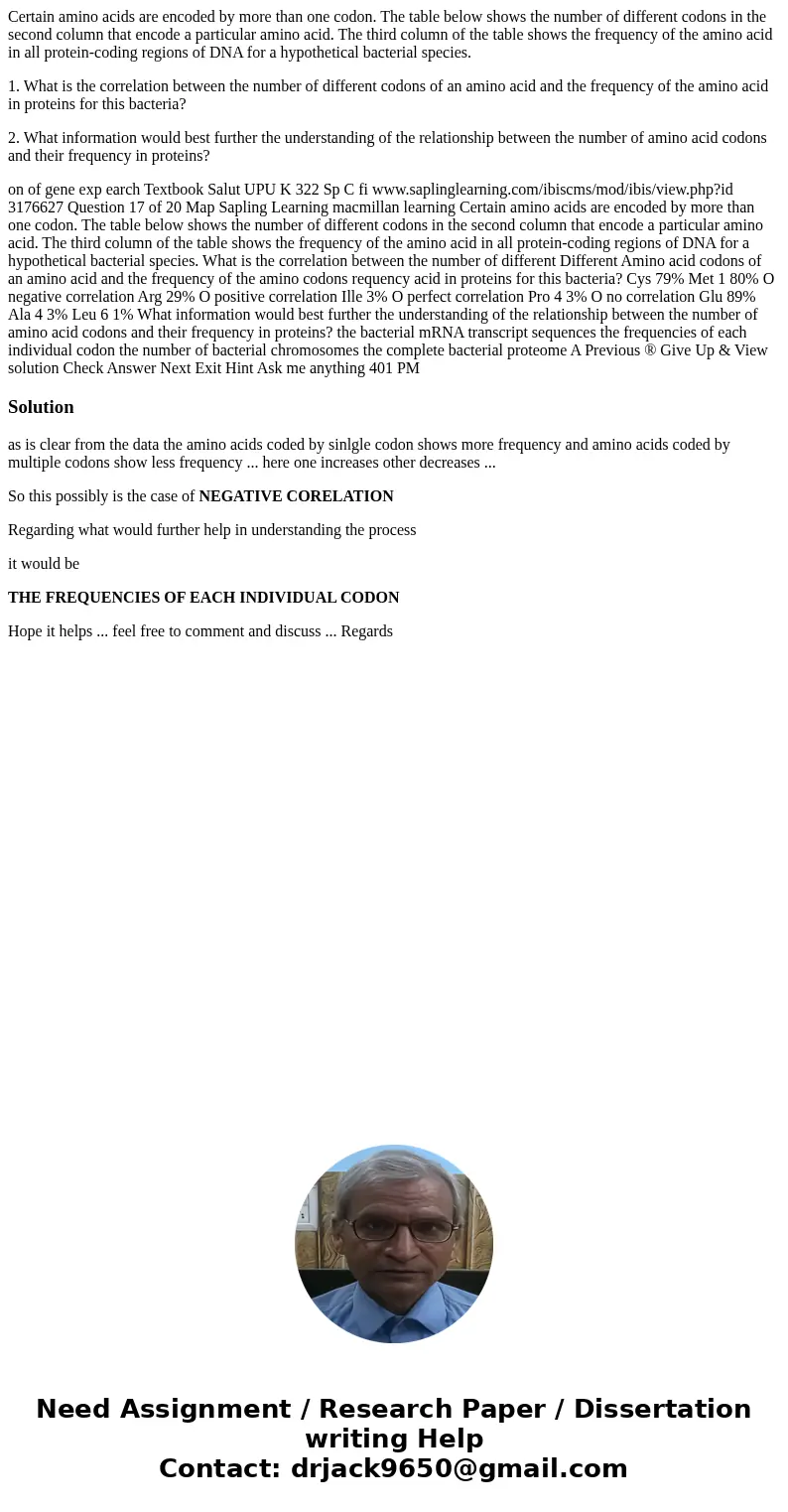Certain amino acids are encoded by more than one codon The t
Certain amino acids are encoded by more than one codon. The table below shows the number of different codons in the second column that encode a particular amino acid. The third column of the table shows the frequency of the amino acid in all protein-coding regions of DNA for a hypothetical bacterial species.
1. What is the correlation between the number of different codons of an amino acid and the frequency of the amino acid in proteins for this bacteria?
2. What information would best further the understanding of the relationship between the number of amino acid codons and their frequency in proteins?
on of gene exp earch Textbook Salut UPU K 322 Sp C fi www.saplinglearning.com/ibiscms/mod/ibis/view.php?id 3176627 Question 17 of 20 Map Sapling Learning macmillan learning Certain amino acids are encoded by more than one codon. The table below shows the number of different codons in the second column that encode a particular amino acid. The third column of the table shows the frequency of the amino acid in all protein-coding regions of DNA for a hypothetical bacterial species. What is the correlation between the number of different Different Amino acid codons of an amino acid and the frequency of the amino codons requency acid in proteins for this bacteria? Cys 79% Met 1 80% O negative correlation Arg 29% O positive correlation Ille 3% O perfect correlation Pro 4 3% O no correlation Glu 89% Ala 4 3% Leu 6 1% What information would best further the understanding of the relationship between the number of amino acid codons and their frequency in proteins? the bacterial mRNA transcript sequences the frequencies of each individual codon the number of bacterial chromosomes the complete bacterial proteome A Previous ® Give Up & View solution Check Answer Next Exit Hint Ask me anything 401 PMSolution
as is clear from the data the amino acids coded by sinlgle codon shows more frequency and amino acids coded by multiple codons show less frequency ... here one increases other decreases ...
So this possibly is the case of NEGATIVE CORELATION
Regarding what would further help in understanding the process
it would be
THE FREQUENCIES OF EACH INDIVIDUAL CODON
Hope it helps ... feel free to comment and discuss ... Regards

 Homework Sourse
Homework Sourse